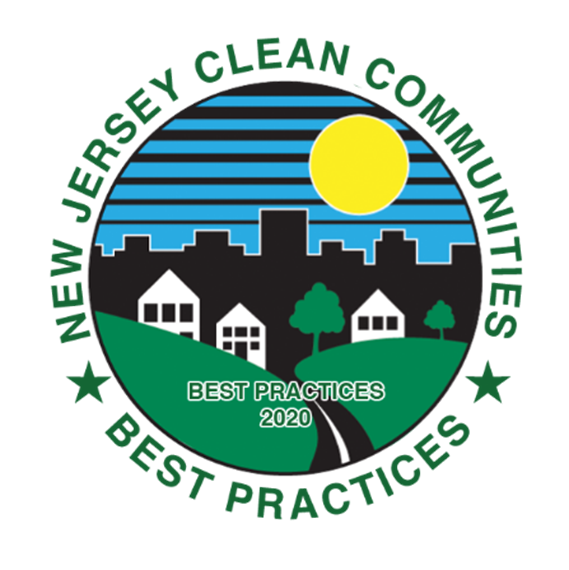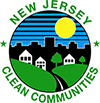Best Practices Guide

Best Practices is an incredible resource for Clean Communities Coordinators, a clearinghouse of information that incorporates general information about the Clean Communities program, examples of model programs, creative ideas and vendor lists.
Coordinators are encouraged to copy, borrow, and customize any and all documents for your Clean Communities Programs. Any feedback, comments and suggestions are appreciated. Please email This email address is being protected from spambots. You need JavaScript enabled to view it..
Disclaimer: The links and documents found here are provided to help in the design of your Clean Communities program. These links do not represent an endorsement of the products or any commercial enterprise. The Guide was developed by a team of county coordinators and was first released in 2006. It has been revised and updated annually, with new information. The New Jersey Clean Communities Council is deeply grateful to the team of coordinators who share their time and talent in pursuit of quality education for coordinators.
Background of New Jersey Clean Communities
New Jersey Clean Communities is a statewide litter-abatement program created by the passage of the Clean Communities Act. The program is managed by the New Jersey Department of Environmental Protection, Department of Treasury, and Clean Communities Council. It is supported by local governments, businesses, community organizations, schools and individuals who work together to keep New Jersey clean.
The Clean Communities Act, passed first in 1986 and later in 2002, establishes a funding mechanism for the program by placing a user-fee on manufacturers, wholesalers and distributors who may produce litter-generating products. The user-fee, collected by the Department of Treasury and disbursed by the Department of Environment Protection, generates approximately $20 million each year.
- $375,000 is disbursed to the Clean Communities Council for the implementation of statewide education related to litter-abatement.
- Of the balance, 80 percent goes to 559 municipalities, 10 percent goes to 21 counties, and 10 percent goes to the Division of Parks and Forestry located in the Department of Environmental Protection.
New Jersey Clean Communities at the local level involves a three-fold attack on litter: cleanup, education and enforcement.
Tackling the Litter Problem
What is litter? Litter is solid waste that’s out of place. It’s the kind of trash found on highways, lakefronts, parks and school grounds. Litter takes many forms: paper, plastics, metal cans, cigarette butts, glass, food packaging, tires and graffiti.
Where does it come from? There are seven sources of litter: pedestrians, motorists, overflowing household garbage, business dumpsters, construction sites, uncovered trucks and loading docks and marinas. Litter is often blown by the wind until it is trapped somewhere, as along a fence.
Why do people litter? People tend to litter when they think someone else will clean up, when an area is already littered, and when they do not feel a sense of ownership or community pride.
Why is litter a problem? Even small amounts of litter are unsightly, unhealthy and dangerous. Litter causes blighted landscapes resulting in an increase in taxes and a decrease in tourism and industry; loss of civic pride and morale; and a negative public image. Litter can also cause disease in people and animals, fires, and accidents, especially on roadways.
How are we solving the problem? The majority of the Clean Communities Program Fund is allocated to local governments, so it is incumbent upon those agencies to carry out effective litter abatement programs. Those programs should include the volunteer cleanup of public lands, enforcement of anti-litter laws, and education of children and adults.
Local Program Overview
Municipalities and counties accepting grant funds should -
- Designate a Clean Communities coordinator
- Organize volunteer cleanups of public properties
- Adopt and enforce anti-littering ordinances
- Develop a public information and education program
- Track cleanup and education data
- Submit annual Statistical Report
Municipalities and counties accepting grant funds may -
- Purchase equipment to be used for picking up litter and debris
- Purchase litter receptacles and recycling bins
- Purchase anti-litter signs
- Purchase labels for storm drains
- Purchase supplies to remove graffiti
- Encourage businesses, community organizations and residents to “adopt” public property and keep it clean
- Organize and publicize cleanup days
- Sponsor contests in the schools
- Host awards programs
- Advertise anti-litter messages and programs through various forms of media.
- Participate in workshops, conferences and awards programs offered by the Clean Communities Council
Municipalities and counties accepting grant funds are required by the 2002 Clean Communities Act to submit an annual statistical report to the Clean Communities Council. The reports must be completed online at www.njclean.org. The deadline for the expenditures of funds established by the Department of Environmental Protection is June 30 of the next calendar year. Statistical reports are due 30 days after the close of the grant spending period (July 30). As per State requirements, records regarding Clean Communities grant expenditures should be kept for six years after the expiration of the grant.
Remember to involve businesses, community organizations, schools and residents in programs and projects developed to reduce litter. Litter is everyone’s responsibility. It’s a matter of community pride!



